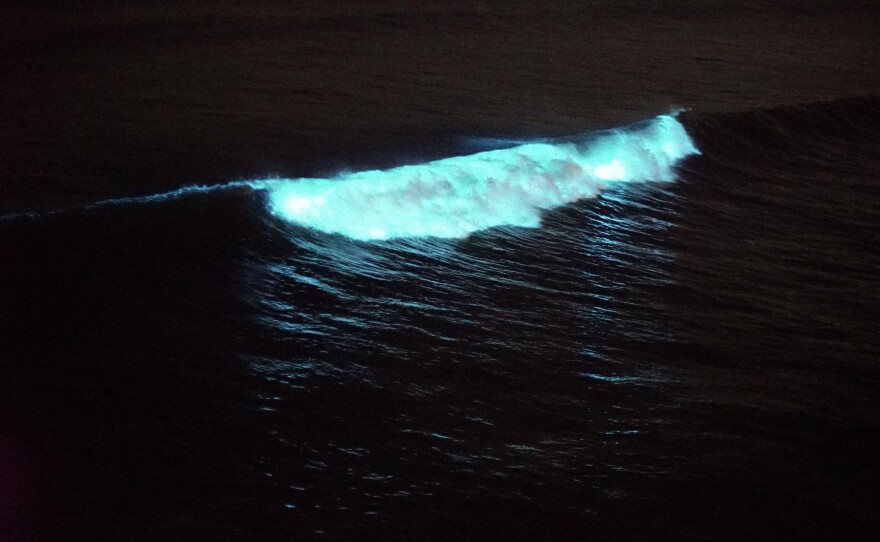San Diego researchers have a better idea of why an algal bloom along the county coastline in the spring of 2020 got so big.
The red tide event in April and May of 2020 was among one of the largest in years and it created changes in the nearshore environment that lingered well into the summer.
Researchers at the UC San Diego Scripps Institution of Oceanography and Jacobs School of Engineering have pinpointed how a specific species of plankton, a dinoflagellate, fed the bloom.
The findings are published in the current edition of the Proceedings of the National Academy of Sciences.
“During the days, a rust-colored — very red-colored — surface ocean you can see it even as the waves are breaking. The white of the breaking waves almost has some pink to it,” said Drew Lucas, a senior author of the paper and an associate professor at Scripps Oceanography and the Department of Mechanical and Aerospace Engineering at UC San Diego.
But at night, the plankton responsible for the phenomenon turned the water into a light show. Breaking waves were lit up by millions of the small organisms.
“When they’re disturbed, they release flashes of light,” Lucas said.

Lucas worked with a team of researchers who deployed a device to track movement up and down the water column.
They found the dinoflagellates that proliferated during the bloom had a pair of long whip-like tails that allowed them to swim near the surface during the day and then plunge 30-to-40 meters deep to eat nutrients at night.
That swimming pattern allowed the organism to reproduce and persist for nearly two months.
“In addition to their swimming speed, which in a relative sense is far beyond human limits, they can coordinate their behavior according to the day-night cycle by migrating down at night and coming back to the ocean surface during the day; they can produce spectacular bioluminescence; they can photosynthesize; they can even prey on organisms that are smaller than them,” said Bofu Zheng, the lead author of the paper.
The red tide event was large enough to alter the nearshore marine habitat. The algal bloom created toxins in the water and used up oxygen which led to fish kills that summer.
“This incredible density of this red tide totally reshaped the coastal oceans bio-geochemistry relative to 70 years of data that we have from a nearby station, the so-called CalCOFI (California Cooperative Oceanic Fisheries Investigations) program, the nutrient conditions were completely and totally anomalous to that 70 years of data,” Lucas said.
The research validates a 50-year-old hypothesis made by Scripps researcher Richard “Dick” Eppley that vertical migration of dinoflagellates are responsible in part for harmful algal blooms that have been documented off the Southern California coast for 120 years.







